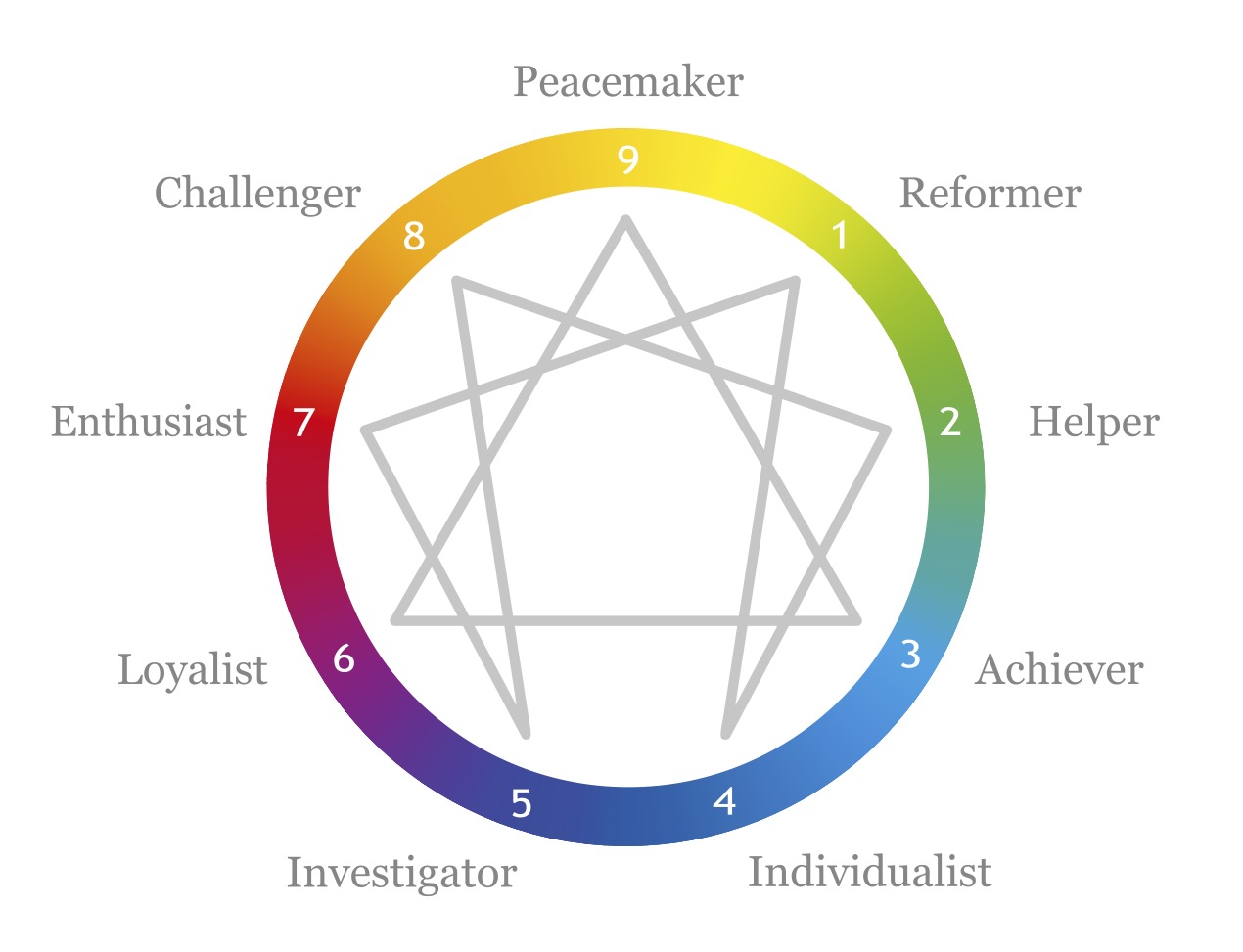The Enneagram and Baylor's Certification Program

The Enneagram, unlike many modern-day personality tools such as the Myers-Briggs or the Birkman, can trace its roots to ancient times. The word itself is derived from the Greek words ennea (nine) and grammos (drawn symbol).
The Enneagram is represented by a circle with nine different starting points and nine equidistant lines drawn within the circle. It is meant to show nine different perspectives or “personalities” for how different people view and understand the world. The lines within the circle show how different personalities interact with each other in times of stress or growth. Numerous tests or checklists can be found online or in books to help someone identify which personality type resonates the most with themselves. However, as learned from Dr. Jon Singletary, Dean of the Garland School of Social Work, the Enneagram is so much more than just a test.
Dr. Singletary describes the Enneagram as a resource that can be used to better help us understand ourselves. He adds that the Enneagram can reveal more about how God has created us, is calling us, and transforming us.
“[The Enneagram] is not a tool to help understand other people better or to teach you how to motivate people; it’s a tool to be the best version of who God is creating you to be. We talk about ‘love your neighbor as you love yourself’, but what does it look like to love ourselves?” Dr. Singletary said.
“We talk about loving God with all our heart, soul, mind and strength, but what do we know about the way our heart, mind, and strength functions within us? All of those together make up the soul of who we are. We say that litany of things that Jesus used, but we don’t often break it down. And the Enneagram really does break those things down. Who are you at the level of your mind? What are you thinking and why? Are you in control of those thoughts? What is it running through your head? How does it shape and motivate you—for better or for worse? And the same with your heart and your gut, which we often think of as your thinking, feeling and doing characteristics,” he added.
[The Enneagram] is not a tool to help understand other people better or to teach you how to motivate people; it’s a tool to be the best version of who God is creating you to be.
Dr. Singletary first learned about the Enneagram in seminary when taking a course on spirituality and personality. However, he really started to use it as a resource after meeting Suzanne Stabile when she was teaching about it at Baylor. Suzanne Stabile is an internationally recognized Enneagram master, highly sought after speaker and a best-selling author. Her book The Road Back To You, and the subsequent The Path Between Us are must-reads for people seeking to learn more about the Enneagram and how it intersects with faith and personal growth. Dr. Singletary attributes her mentorship and friendship as what inspired him to in turn teach the Enneagram. She helped him realize how he was able to use it as a tool for self-reflection and also within the context of his own family.
Partnering with the Center for Church and Community Impact, Dr. Singletary is leading workshops for the Enneagram for Leadership program at the Garland School of Social Work. The workshops cover three different levels of understanding pertaining to the Enneagram: basic (information about the Enneagram), intermediate (knowledge about the Enneagram) and advanced (wisdom about the Enneagram). In order to complete the certificate program, participants take seven classes—beginning with an introductory level course, three core intermediate classes focused on centers, passions, or arrows, and then three advanced level courses that dive more deeply into the same core subjects. It is also possible to sign up for courses individually (without certification).
We talk about loving God with all our heart, soul, mind and strength, but what do we know about the way our heart, mind, and strength functions within us? All of those together make up the soul of who we are. We say that litany of things that Jesus used, but we don’t often break it down. And the Enneagram really does break those things down.
Dr. Singletary describes the certificate program as being, “about individuals making an investment in their own journey, and it is also a community of people, which I think is really important. Suzanne talks about the mission of their center as nurturing solitary work that cannot be done alone, and that’s kind of what this certificate program is. It’s work you have to do on your own, but you need a community to keep you invested and to reflect on and be vulnerable about what gets in the way of who we want to become.”
While most leadership programs discuss leadership from external perspectives, this program takes a more self-reflective approach. It invites participants to begin to let go of what is holding them back from accepting God’s love and to better understand how their signature traits can appear as both a strength for them and a weakness. Using this angle, participants begin to travel down a road of growth that can be completely transformative in the ways of how you understand yourself and your own actions in a way you might have never realized before. As Dr. Singletary said, “The inward journey affects the outward journey.”
Any leader looking to begin or continue a journey of self-reflection to strengthen their leadership should strongly consider using the Enneagram as a tool for doing so.